Heads covered with straw wide-brimmed hats or scarfs, women and men, with skilled moves of their hands are moving the scythe from right to left, laying the grass on the ground.
On one hand the scorching sun, on the other the bone-piercing wind create difficulties for mowers but the strong arm of these people never gets tired. Use of big machinery in these territories is neither beneficial nor convenient, the small plots of land are being cultivated with own hands.
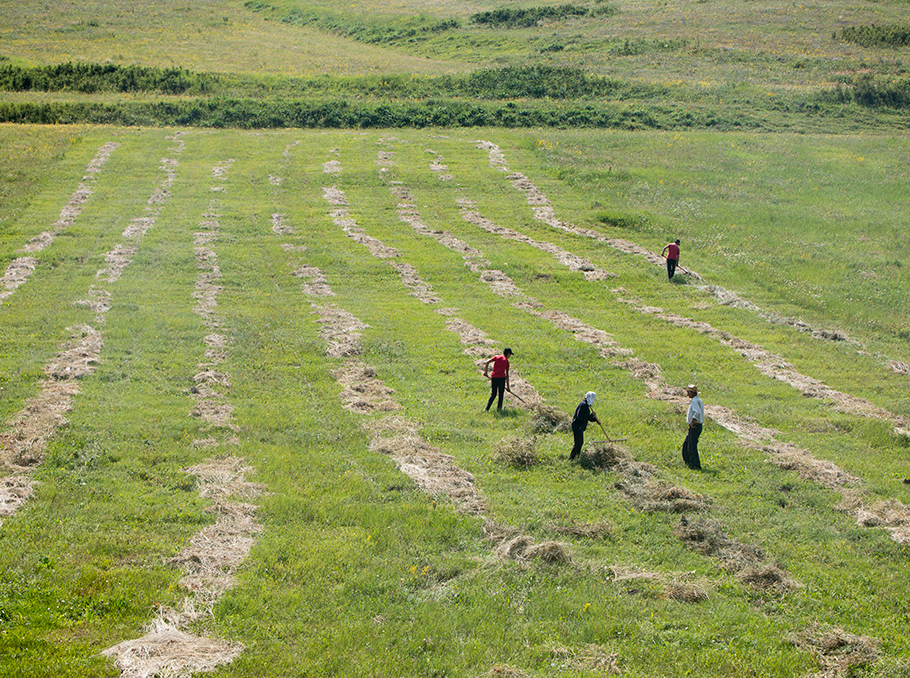
Photo: Mediamax
Our car passes straight over the mountain, through narrow, old road on which we appeared with the help of online map and which, as we would learn later, is the former road taking to the village. The mowers are below and as far as the road is partially destroyed, the car moves slowly, giving us an opportunity to study the moves of the people.
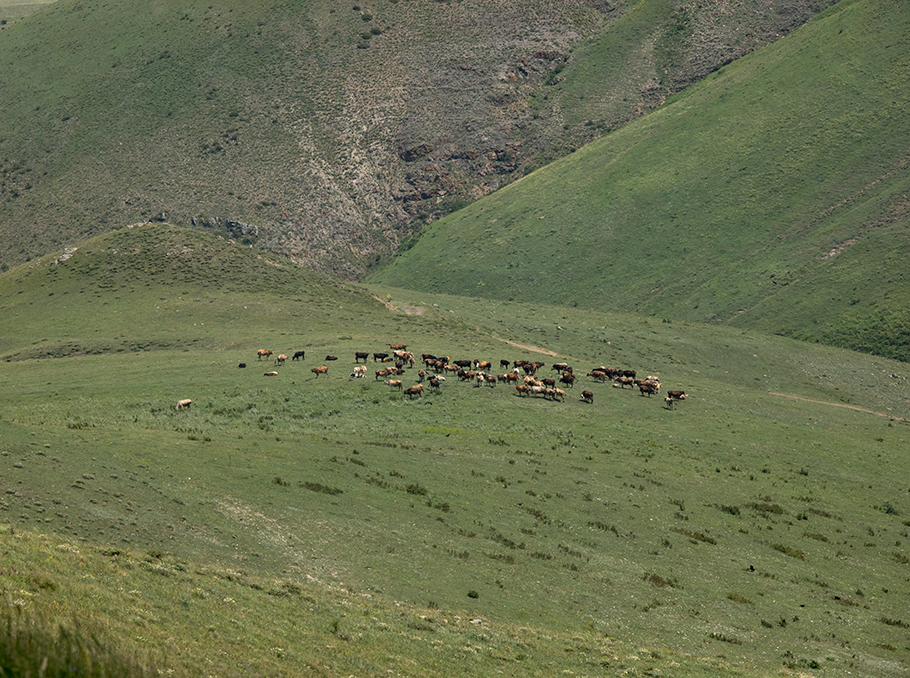
Photo: Mediamax
We are heading to find the rock-cut settlement of Spitak which is in the territory of Geghasar community, but before that, we must first reach the head of the community.
Varzdat Grigoryan is waiting for us in front of his house. As we get acquainted, we manage to pick a few ripe cherries from the tree and enjoy the sour fruit.
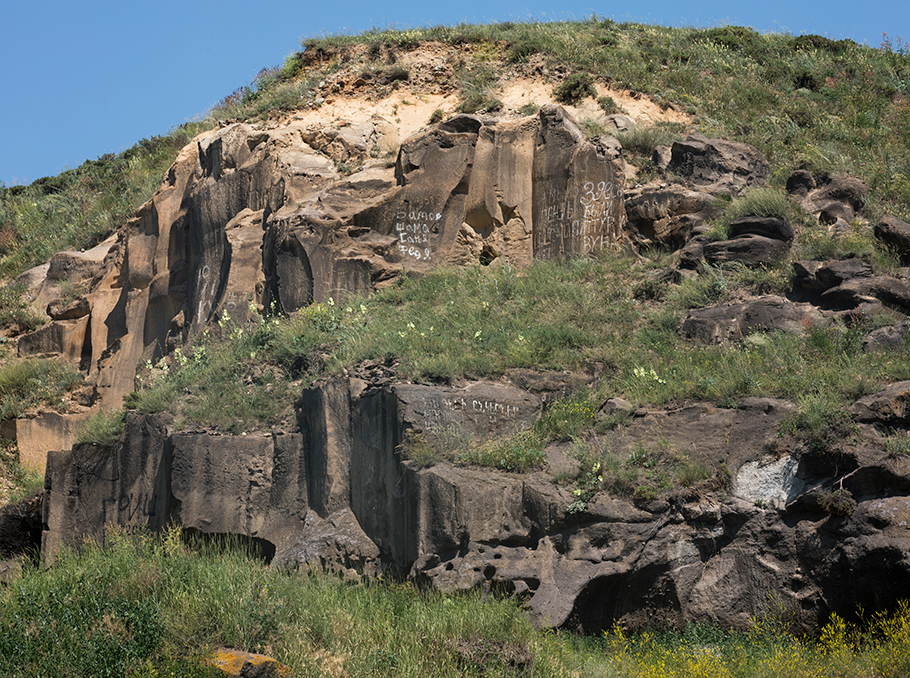
Photo: Mediamax
Saryan images and villagers mowing grass
The road descending from the cliff leads to fields, from above, we see Saryan images which become complete by the villagers mowing grass below.
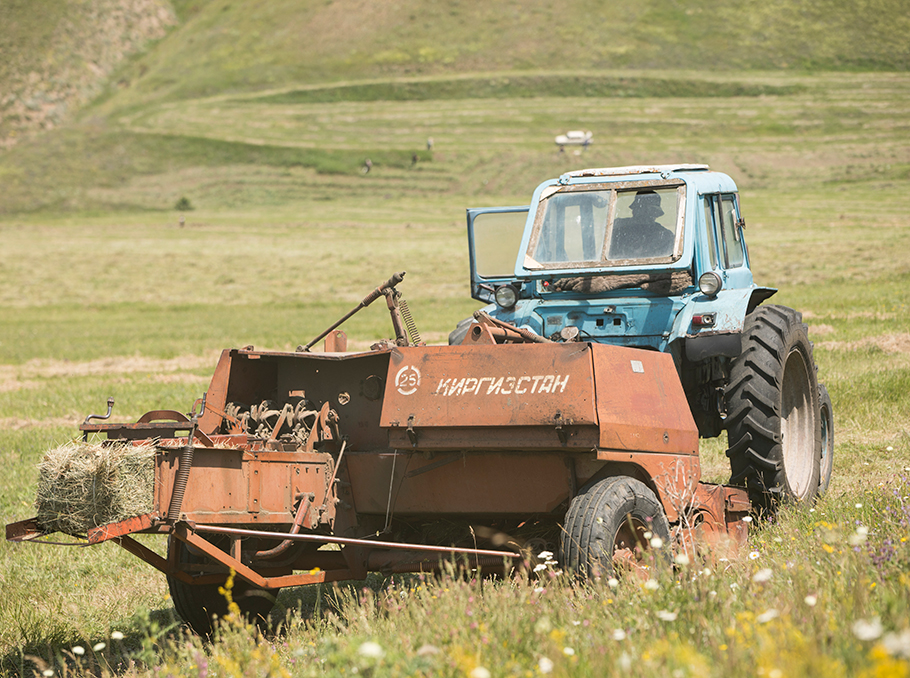
Photo: Mediamax
The first people we meet are two men and a school age boy. The faces of all three have turned bright pink from the sun, the skin in some places has dried, the hands are rough but it does not stop their eyes shine while smiling.
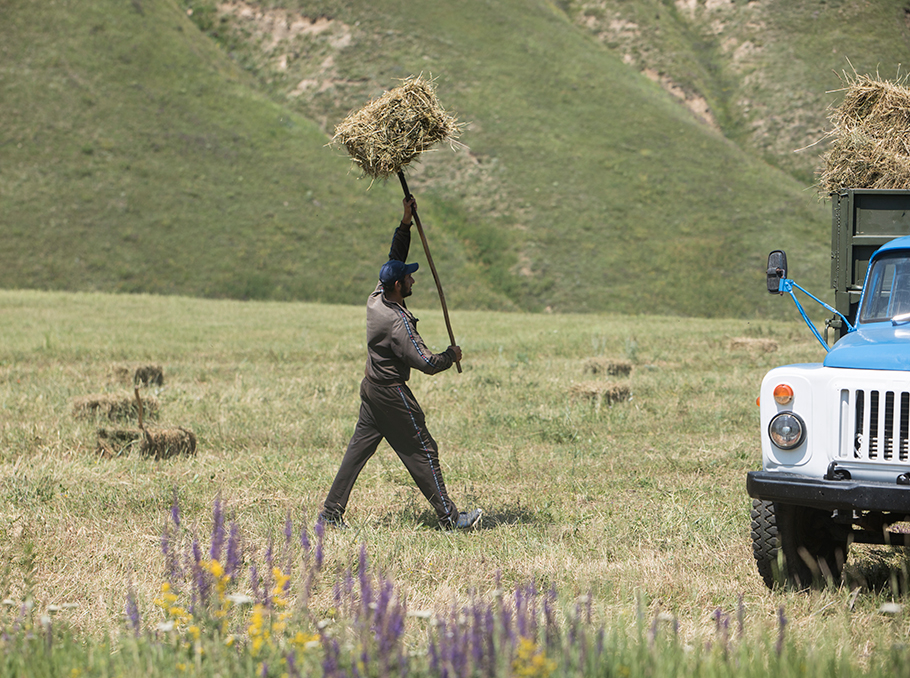
Photo: Mediamax
The haying time is an additional source of income for such “brigades.” They do not speak much, they just greet us and keep working.
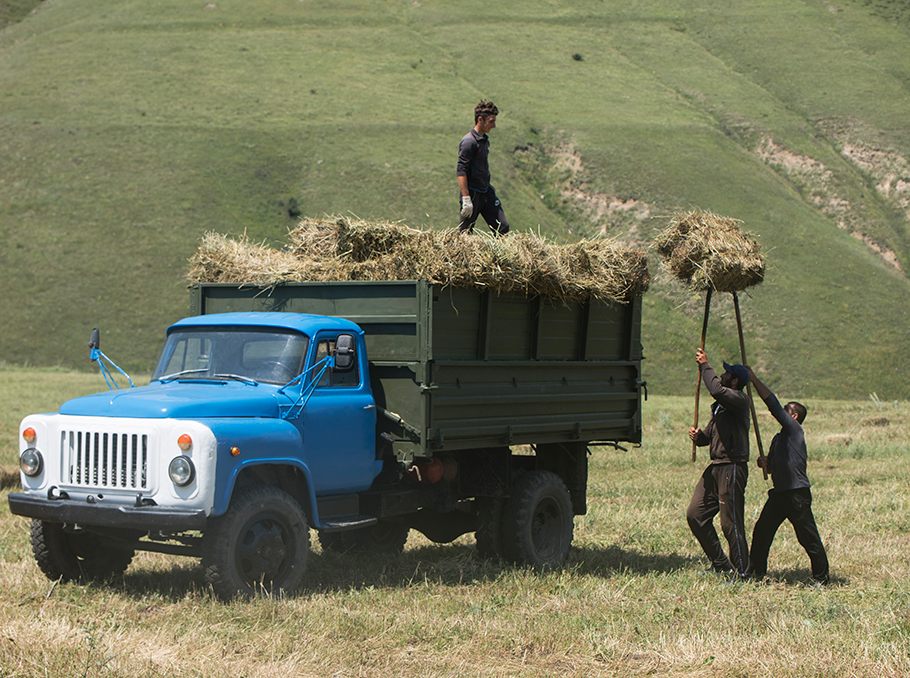
Photo: Mediamax
We move forward a little and meet a woman resting in a car. To our question – how are you? – she answers – “we are suffering.”
-We are waiting for the tractor to come to our field to tie the hays. The neighboring field had a good harvest this year this is why it comes to us a bit late. We are haying partially by hand and partially by machine. Every year I mowed our grass by hand but this year, my son did not leave for Russia and he is doing it too, - says Emma who has a family of 9 – two sons, a daughter and 6 grandchildren.
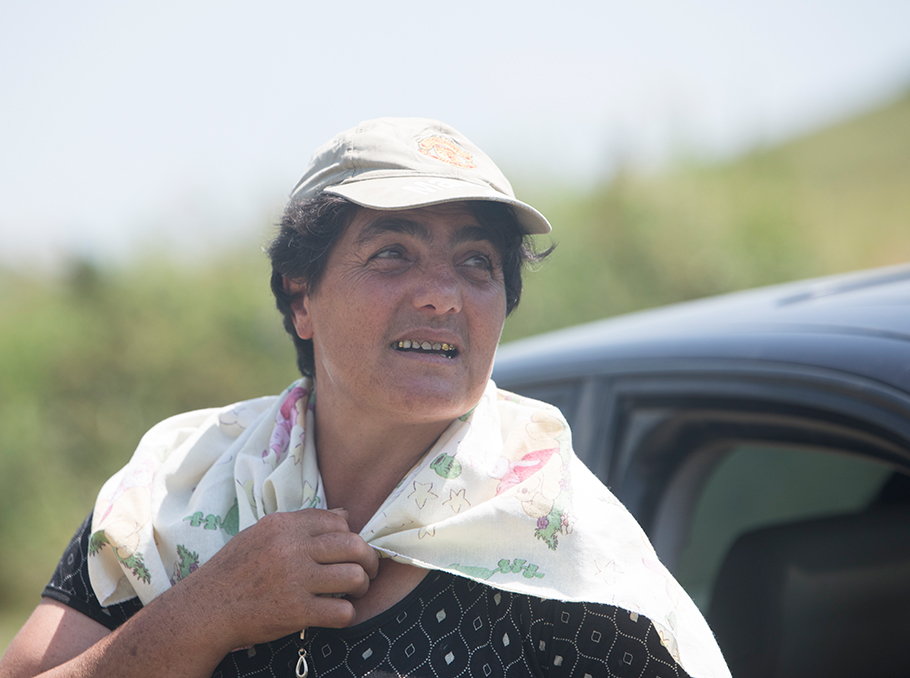 Emma
EmmaPhoto: Mediamax
- You’re a strong woman,- I say.
- Yes, I am, there is no other choice. What have we not seen after the earthquake, what we suffered before returning to our house. It was very hard. There is no use of fieldwork. We simply do it not to stay idle. My sons go to Russia, this is the way they keep the family.
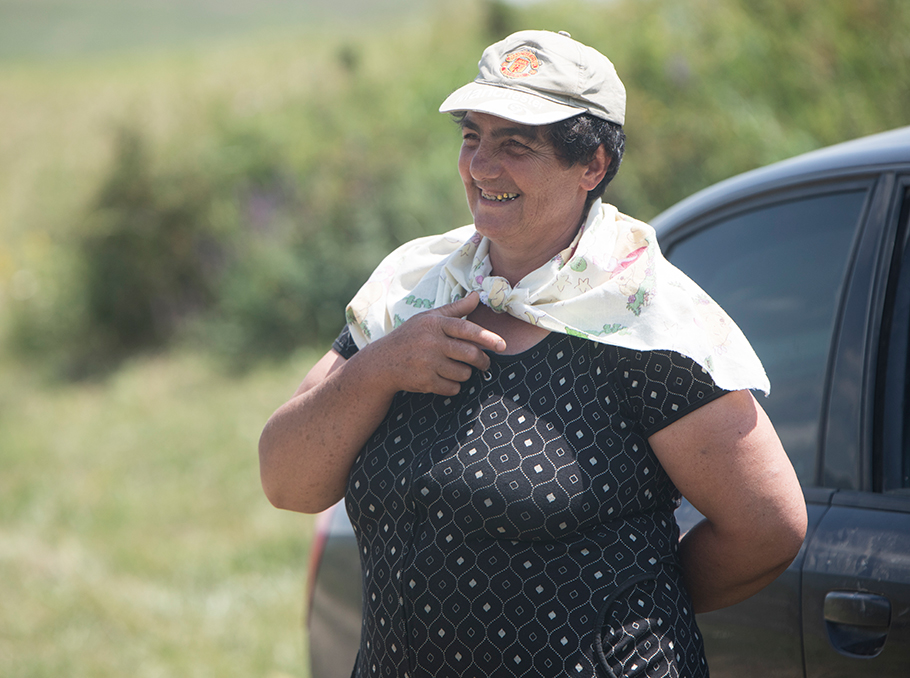 Emma
EmmaPhoto: Mediamax
- How do your daughters-in-law endure this time?
- What else can they do? They are forced to.
- This is what they saw since their childhood. Their fathers worked abroad too and weren’t by their side, - the community head joins the conversation.
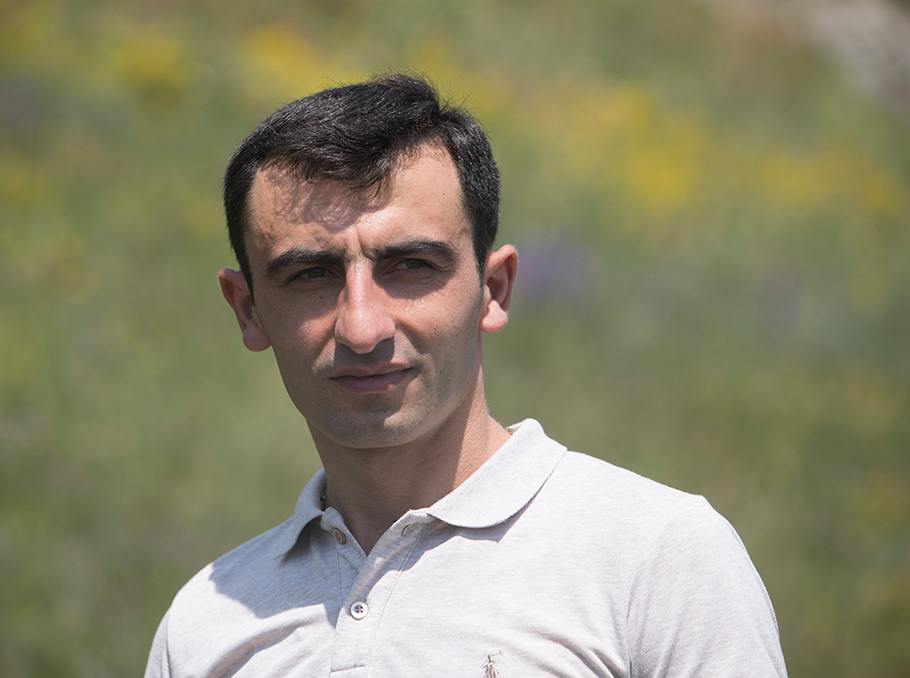 Varzdat Grigoryan
Varzdat GrigoryanPhoto: Mediamax
- The children suffer more, they miss them. It is a very hard thing. You marry the sons and send them to work abroad, - Emma says, noting that her husband was a police officer so she was luckier as compared with her daughters-in-law, her husband was by her side.
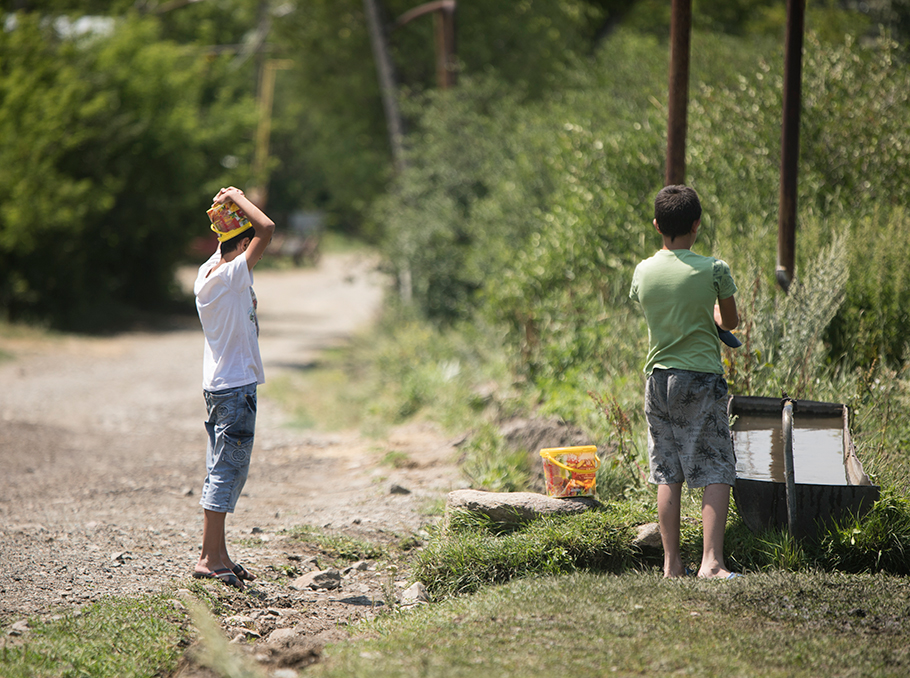
Photo: Mediamax
Wagon-houses, rural issues and road to abroad
Geghasar community is on the right bank of Pambak River. It was completely destroyed during the 1988 earthquake. 140 residents died. Today the village has 930 residents but the number of permanent residents is about 800. Some of them moved to Russia after the earthquake and some to Vanadzor. Many of the villagers come here during the summer months to live and cultivate their lands.
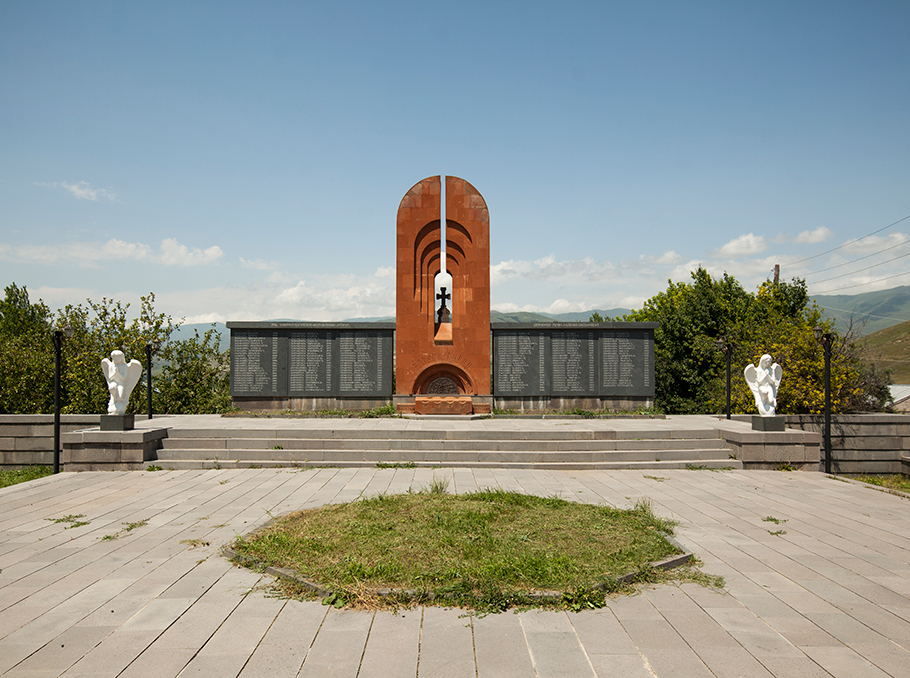
Photo: Mediamax
Apart from a monument reminding about the earthquake, sadly, there is also big number of wagon-houses, but people here work hard to eliminate the traces of this tragedy.
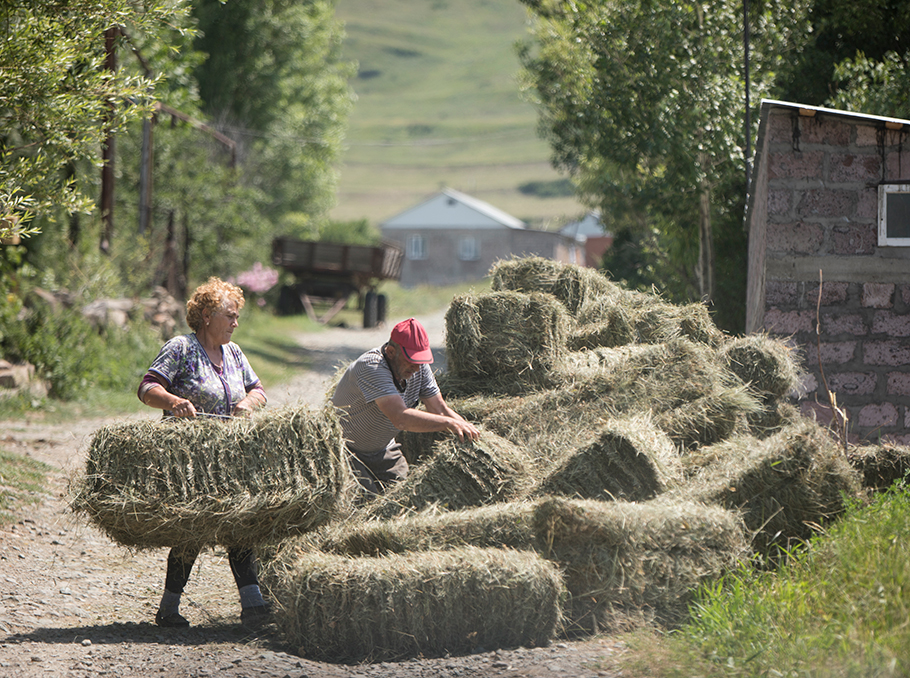
Photo: Mediamax
After the collapse of the Soviet Union the reconstruction works of the community stopped. From 2005 some projects have been implemented. Overall, 60 houses were built.
Some people live in wooden, temporary structures and about 15 families in wagon-houses. The apartment building issue remains number one problem in the community.
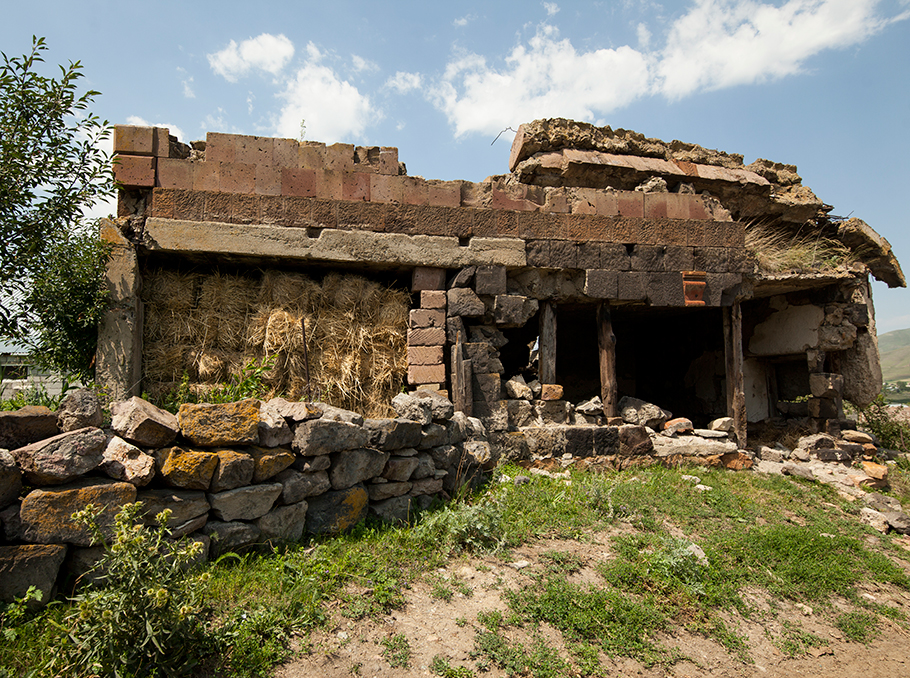
Photo: Mediamax
Geghasar has a newly built school with about 80 students. The head of the community says that 10 years ago the school was overcrowded and they even needed a second shift, but now the number of students has decreased by more than twice. There is preschool in the school, but the village does not have a kindergarten.
Here people are mainly engaged in fieldworks, cattle breeding, plant growing, most of them leave to work abroad.
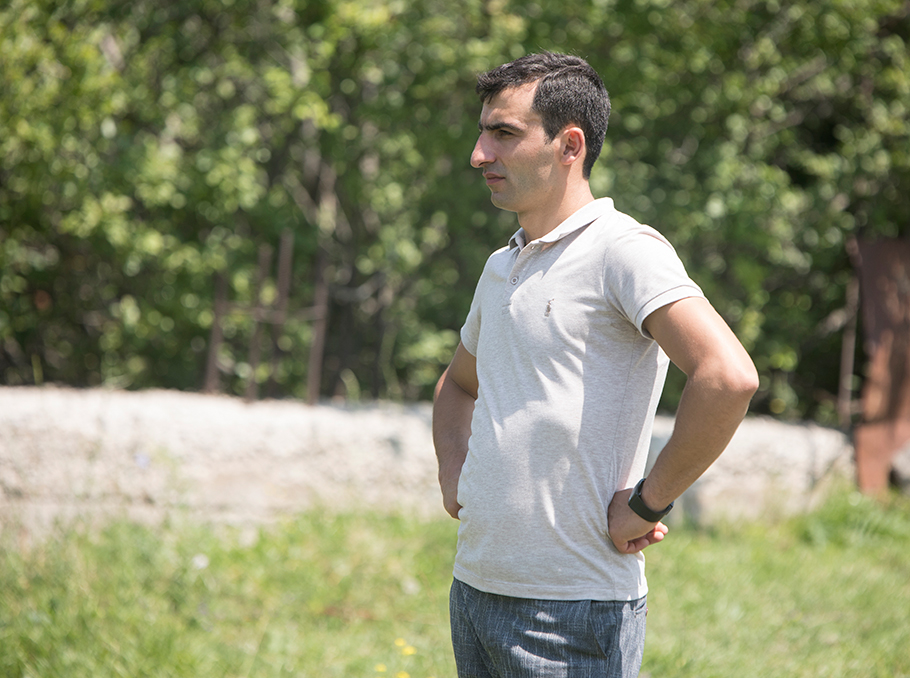 Varzdat Grigoryan
Varzdat GrigoryanPhoto: Mediamax
- After returning from the army the young people head to Russia. There is no work here, this is the weak side of our community. A group of young people have recently set up a small stone workshop which allowed at least those 3-4 guys not to leave to work abroad.
The seasonal work of the community is mainly cultivation of land which does not give such a big volume of produce to sell and live. We also have issue with irrigation water. During this season people use drinking water for irrigation due to which there is a problem with drinking water,- Varzdat Grigoryan says, on the way back from the field to the village.
Besides, there is no entertainment for young people as such, only billiard, tennis, chess hall opened recently.
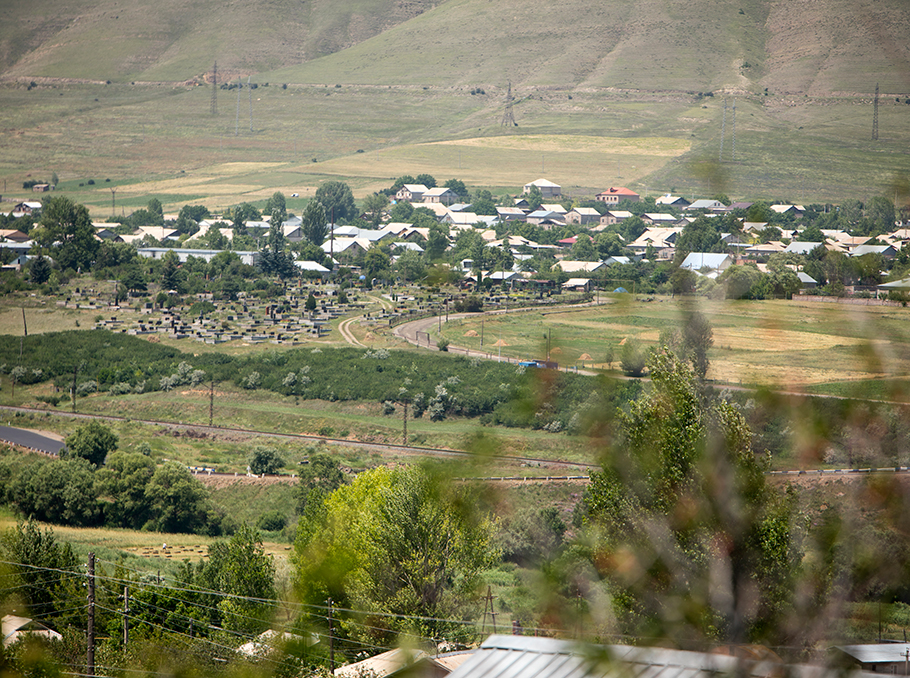
Photo: Mediamax
The best home at the time and the wish to reborn
Geghasar is also known for its cold springs, one of which is on the way from the field to the village. After cooling down a beautiful two-storey house opens in front of us. The lady of the house greets us from the window and comes downstairs. The conversation continues on the stairs.
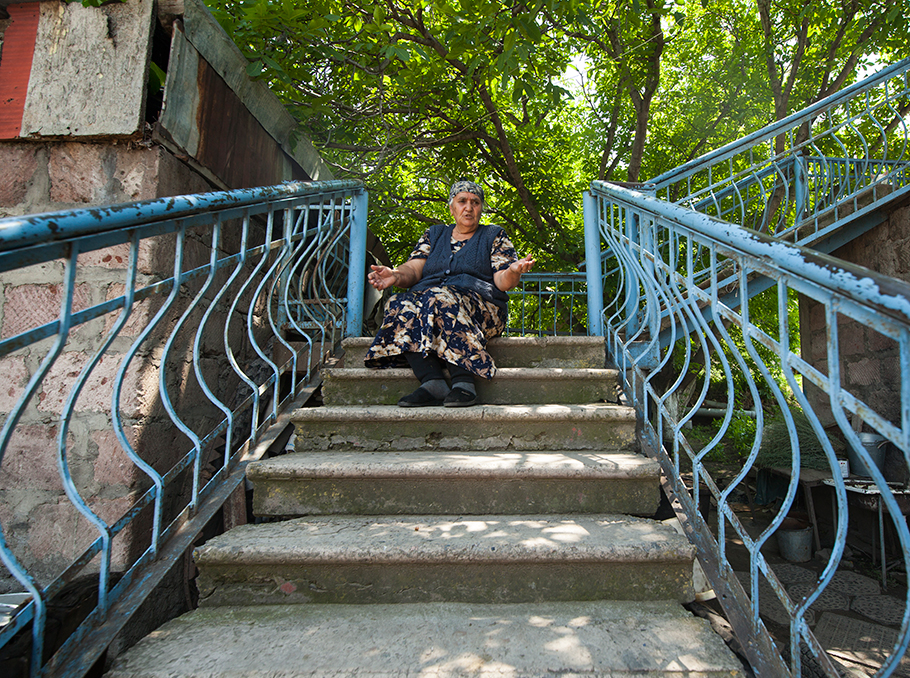 Kima Ghukasyan
Kima GhukasyanPhoto: Mediamax
- I have been living in this village since 1960. Before the earthquake, they did not even know that such a village exists. The earthquake hit, the mountain collapsed and they remembered us. I had built palaces before the earthquake, in 1981 the construction of our house was completed. My son wanted our house to be the best in the village.
We brought red tuff from Hoktemberyan which at that time was allowed to use only for building monuments. We built the house my son dreamt of, but a year later he went to the army and died in a fire that broke out in the military unit. Then my daughters died. Now my house and my heart are in an emergency. I have two sons, a big family, my daughters-in-law and grandchildren are very good people,- Kima Ghuksyan says, looking at the ruins of the church next to her house.
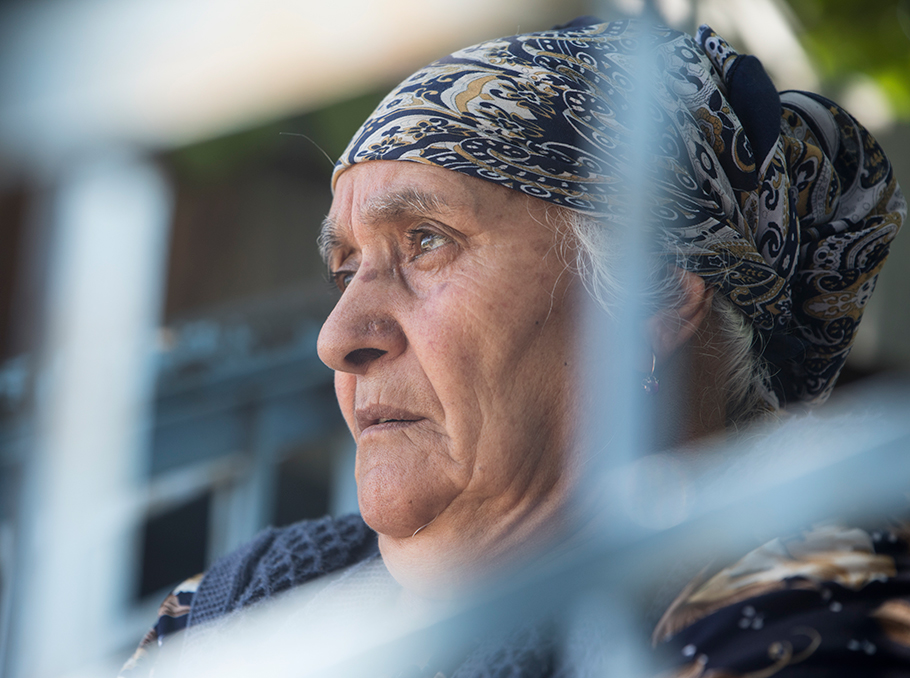 Kima Ghukasyan
Kima GhukasyanPhoto: Mediamax
St. Sargis Church was built in the 19th century, probably basilica, a single-step structure, of which today only the foundations and parts from the wall have remained.
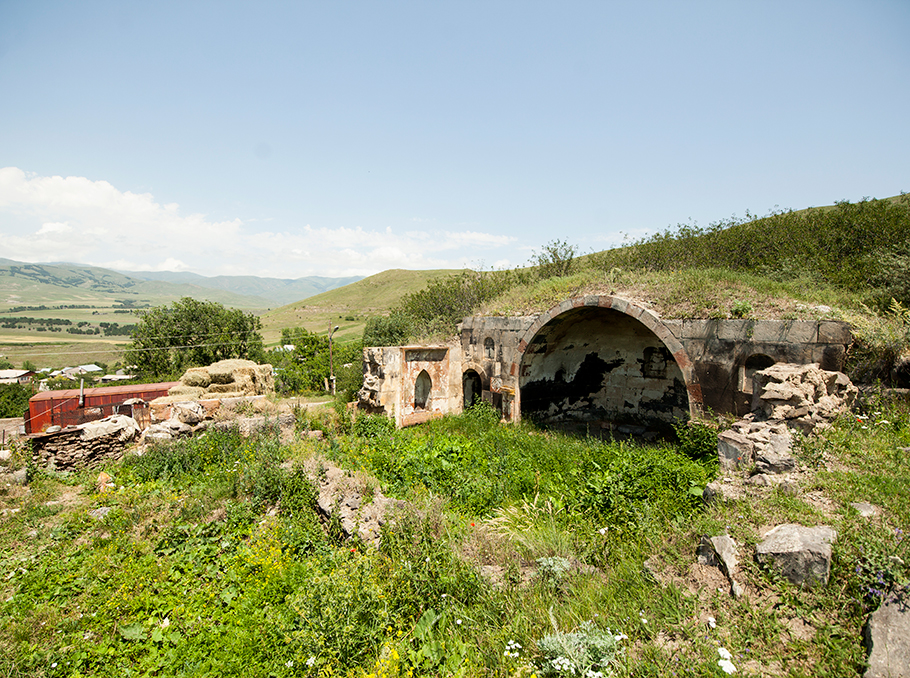
Photo: Mediamax
- I would like at least our church to be built, I have no other request, so that we can marry our children here and give a start to new lives.
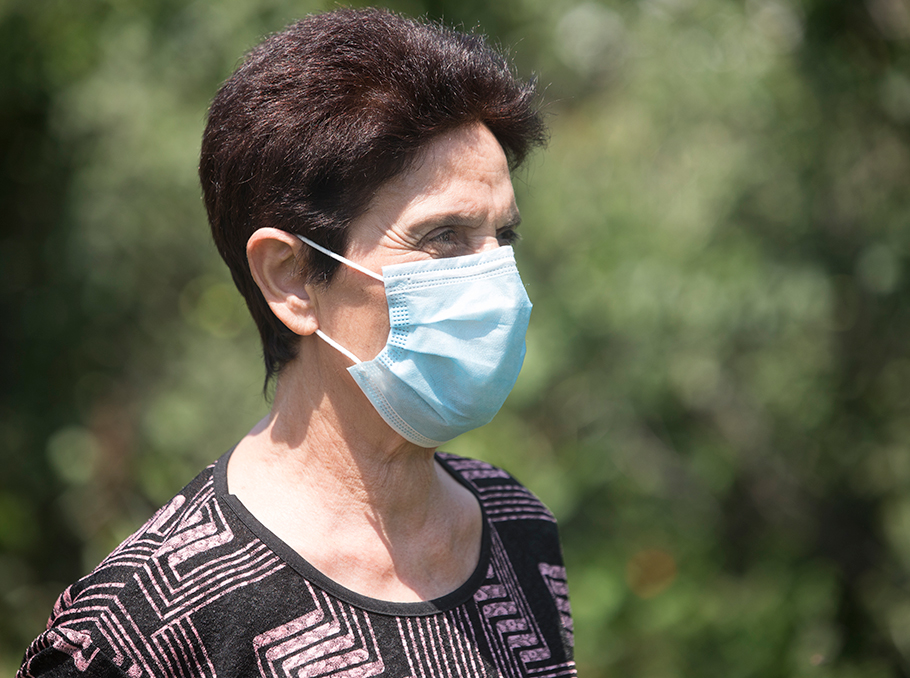 Lala Matevosyan
Lala MatevosyanPhoto: Mediamax
The next stop is near the house of former teacher Laura Matevosyan. The teacher tells that the ancestors of the present residents of the village came from Western Armenia. She says people “reborn” several times live here.
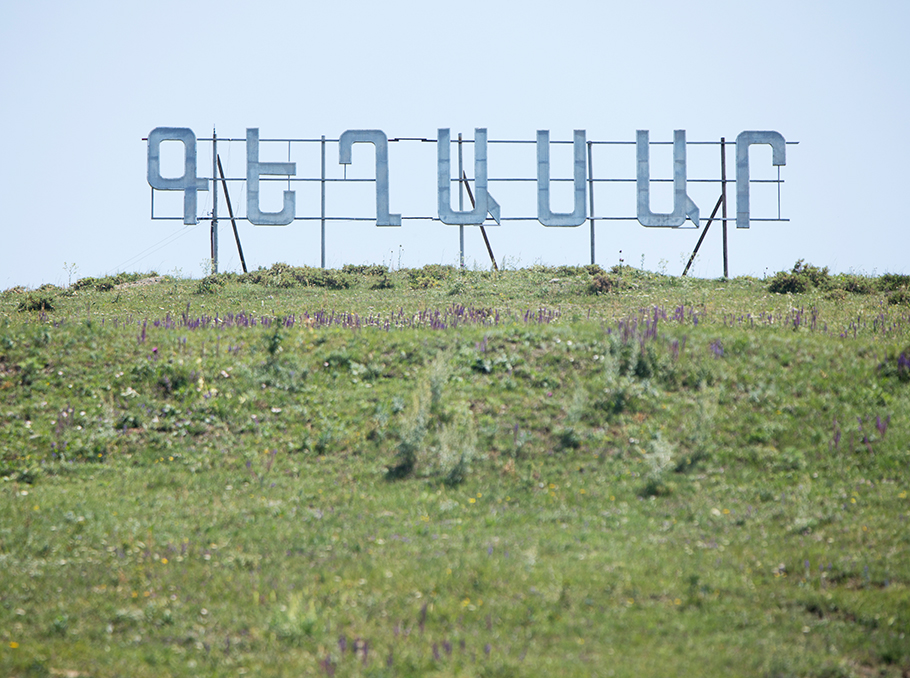
Photo: Mediamax
- The earthquake was a terrible thing, it is impossible to forget it. I was at school, the bell rang, the teachers reached the classroom and it hit. Those seven seconds of the earthquake seemed at least seven minutes. I was on the second floor, struggling against the tide for a long time and trying to find the door. I reached the door and saw that there was no door but a narrow crack left instead of the door.
The oscillations slowed down, I leaned against the wall motionless. I sobered up and realized that I had survived. The second floor came down, leveled to the ground. I somehow went out and saw that the school collapsed with most of the students and teachers remaining under the rubble.
The wounds of the earthquake, even after 33 years, haven’t been completely healed. People left after the disaster but most of them returned. The village lives with its people and it is very good that the returnees settled here.
Houses hollowed out in huge black tuff
We continue our journey to Andzavayin settlement, climbing up the hill. Dried herbs with sharp heads hurt the legs a little, but what awaits us at the top is worth this “sacrifice” and what awaits us at the top may attract any tourist and give new breath, activeness to the village.
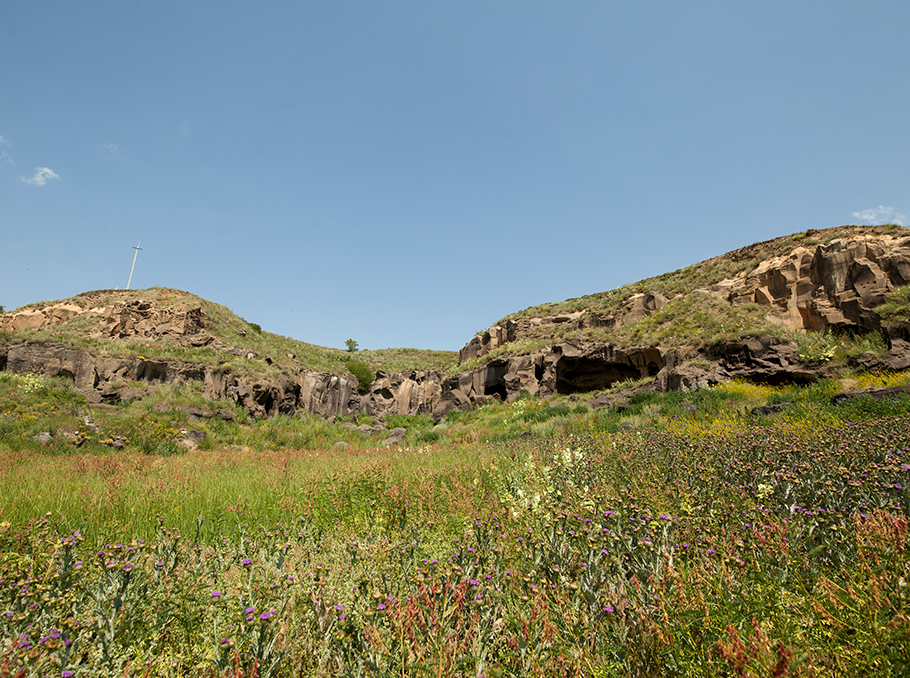
Photo: Mediamax
The left bank of Pambak River is decorated with the rock-cut settlement of Spitak which was discovered during the road construction works in 1977, and the expedition of the Institute of Archeology conducted excavations here for only 2 years.
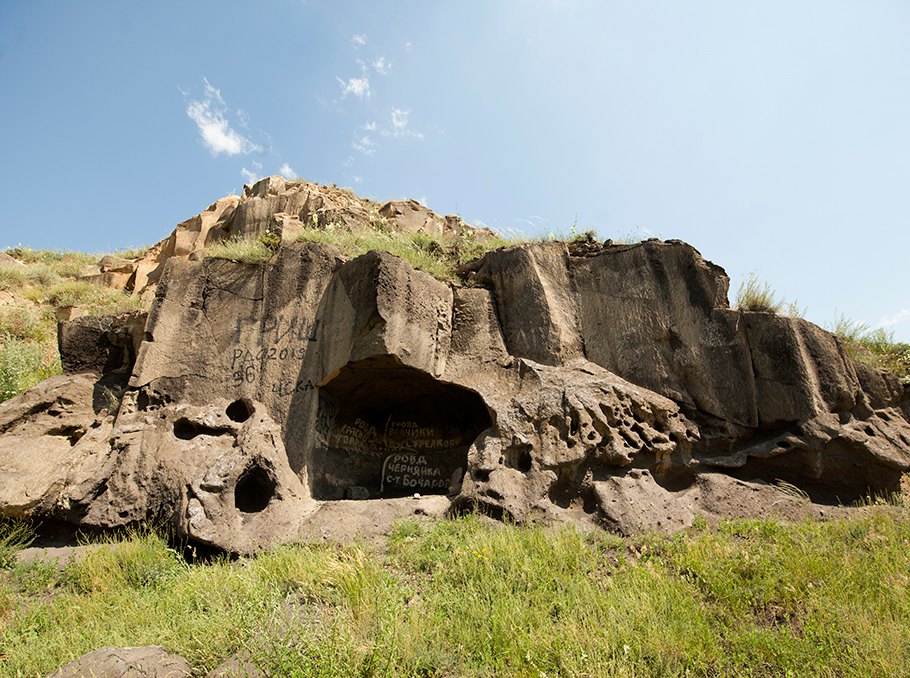
Photo: Mediamax
The settlement with houses dug in the huge black tuff was created in the 12-13th centuries and has two districts. During excavations 40 complexes with 4-5 rooms were unveiled. Some of the stone-carved houses have two and three floors. Secret passages and stairs were used here to communicate with each other.
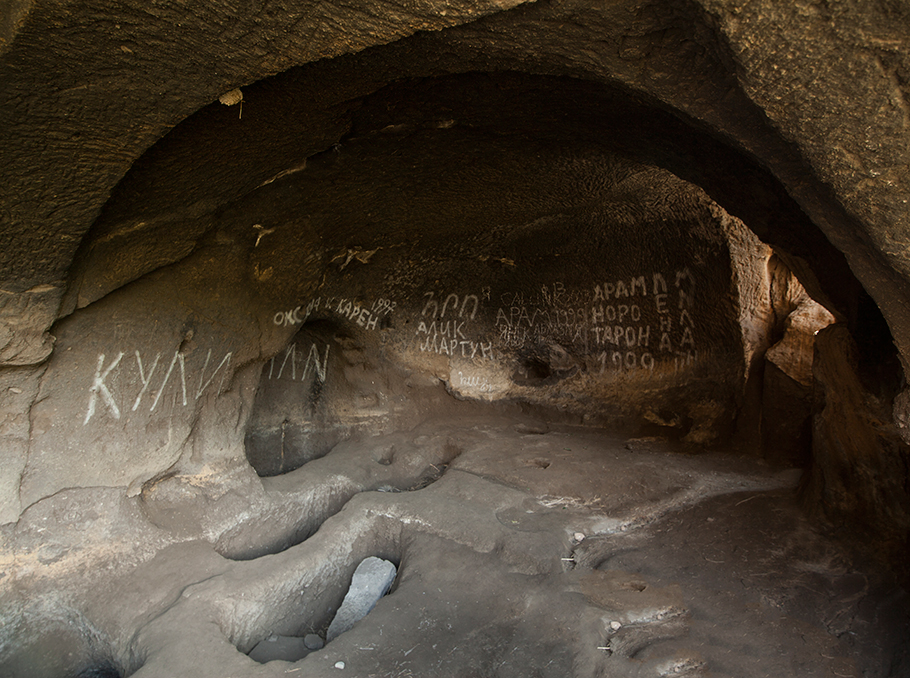
Photo: Mediamax
The architecture and interior of Spitak rock-cut settlement have similarities with the underground city of Ani and the monuments of the same period in Georgia.
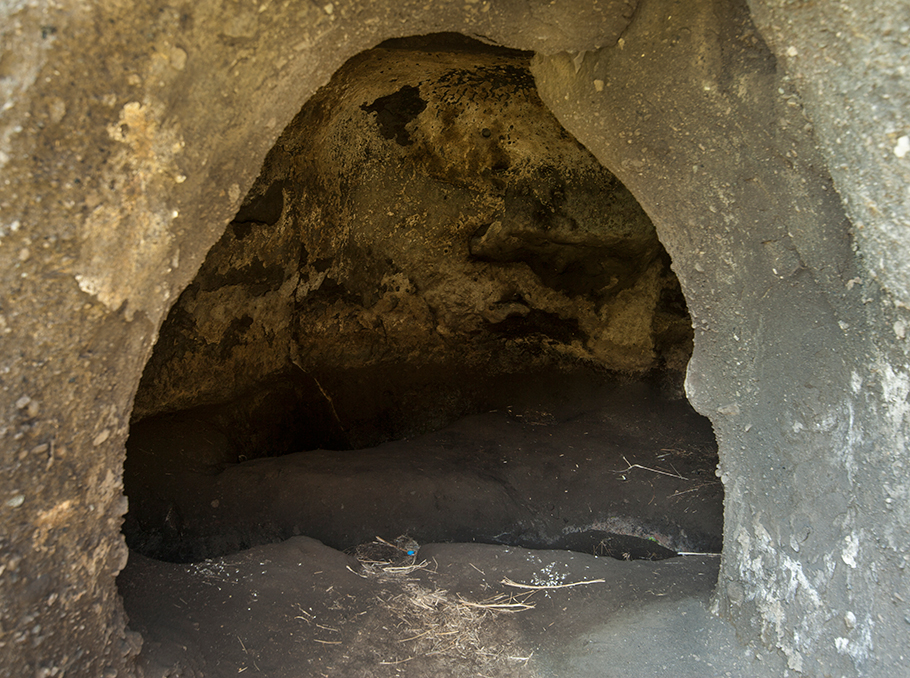
Photo: Mediamax
You can see 4 types of buildings in the settlement – worship, public, residential and industrial. In the center of the eastern district there is a carved church with only a part of it having been preserved.
The settlement also has a tomb with big arches and a number of tombs. During the excavations caravanserai was also discovered. Caravans of loaded camels traveling from Persia to Caucasus passed through an important trade-economic route stretching from here.
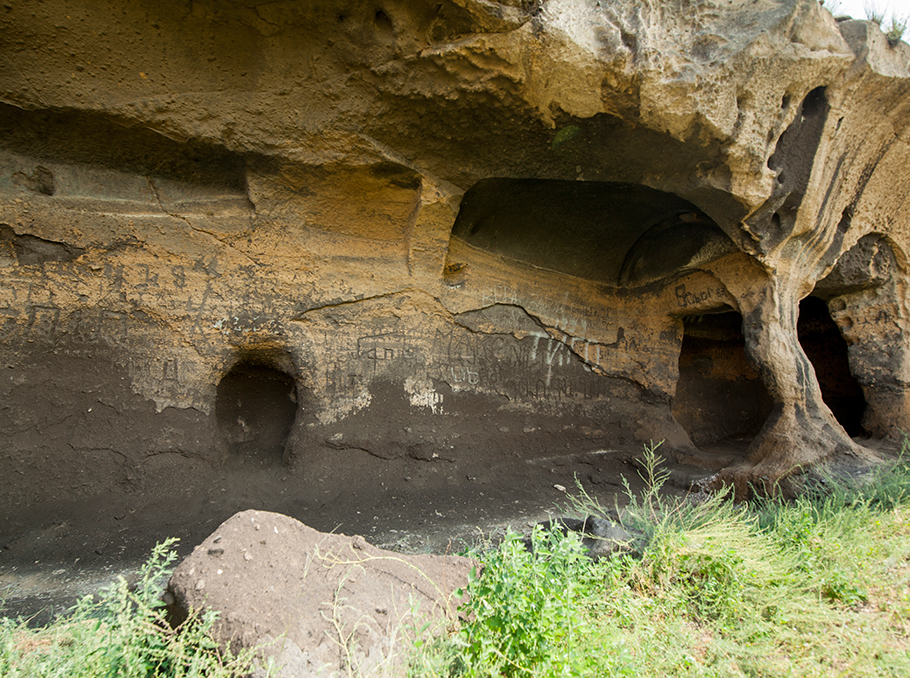
Photo: Mediamax
The residential “houses” have a simple decoration, “rooms” with windows, holes in the walls for putting different things, tonir (earthenware ovens in the ground). The narrow platforms were bedrooms. The ceilings of the carved structures were arched, have small vents. The entrances were closed in time with wooden doors or large boards.
The workshops occupy the largest part, there are stoves dug in the ground and small streams connect the wells and holes.
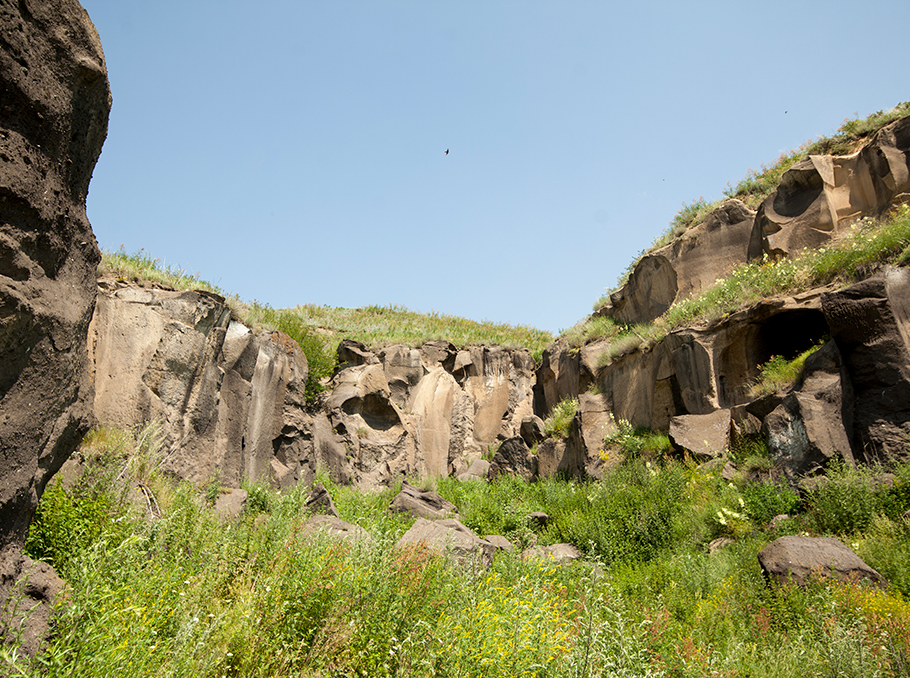
Photo: Mediamax
The excavations revealed glazed and ordinary pottery, working iron tools and weapons, copper and bone jewelry, Mongolian, Georgian, Byzantine coins and other finds.
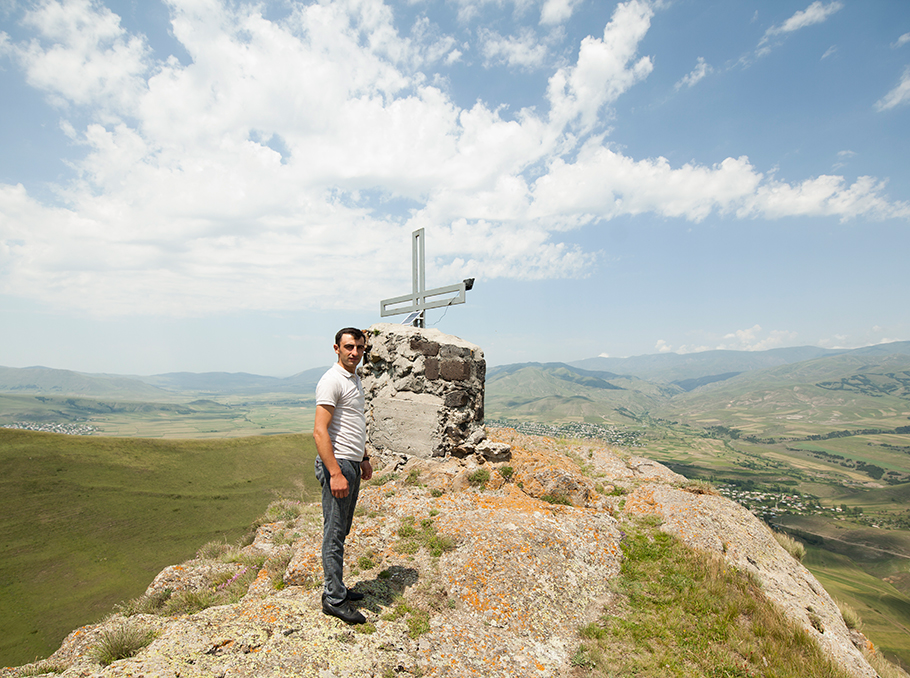 Varzdat Grigoryan
Varzdat GrigoryanPhoto: Mediamax
- Tourists come to see the rock-cut settlement but they usually find out about this place while passing through this road, not in advance. In fact, there is a need to advertise and make it famous,- Geghasar community head says on the way down the settlement.

Photo: Mediamax
The chapel overlooking the community from above
- There were mausoleums in the territory of Geghasar, about which no concrete information was provided. After the collapse of the Soviet Union, these territories were privatized as arable lands, - Varzdat Grigoryan says on the way to the highest peak in the village.

Photo: Mediamax
By the way, fans of the film based on Hrant Matevosyan’s “Autumn Sun” novel will easily recognize the famous rock of Geghasar and will see today’s same hard-working villagers in the 1977 film.

Photo: Mediamax
The road passes directly over the mountain, from time to time you can see eagles and hawks spinning above the heads. We stop for a moment to cool off with the water coming from the mountains.

Photo: Mediamax
- This spring is very close to the source, that’s why it is so cold. It was built in 1960s but it had dried up. We found it again last year,- the head of the community takes the cold water in his palms and drinks it with a big sip.

Photo: Mediamax
We reach the height of about 2200 meters and continue the way to the chapel on foot. St Astvatsatsin Chapel built on the rock is one of the most important sanctuaries for the villagers but there is no written information about this place of pilgrimage.
Marie Tarian
Photos by Emin Aristakesyan
The current article was produced with UNFPA support. The views expressed in this article are solely of the authors and do not necessarily represent those of UNFPA. ![]()
#demogaphicresilience













































Comments
Dear visitors, You can place your opinion on the material using your Facebook account. Please, be polite and follow our simple rules: you are not allowed to make off - topic comments, place advertisements, use abusive and filthy language. The editorial staff reserves the right to moderate and delete comments in case of breach of the rules.